What is the best way to water my Wild radish?
To water Wild radish, you can use a garden hose with a spray nozzle, a watering can, or just about any other common watering tool. Generally, Wild radish is not too picky about how they receive their water, as they can live off of rainwater, tap water, or filtered water. Often, you should try not to water this plant from overhead, as doing so can damage the leaves and flowers and may lead to disease as well. At times, the best method for watering this plant is to set up a drip irrigation system. These systems work well for Wild radish as they apply water evenly and directly to the soil. For one Wild radish that grows in a container, you can use a similar watering approach while changing the tools you use. To water a container-grown Wild radish, use a cup, watering can, or your tap to apply water directly to the soil.
![more]()
What should I do if I water my Wild radish too much or too little?
The remedy for underwatering Wild radish is somewhat obvious. When you notice that your plant lacks moisture, simply begin watering it on a more regular basis. The issue of overwatering can be a much more dire situation, especially if you fail to notice it early. When your Wild radish is overwatered, it may contract diseases that lead to its decline and death. The best way to prevent this outcome is to choose a proper growing location, one that receives plenty of sunlight to help dry the soil and has good enough drainage to allow excess water to drain rather than pooling and causing waterlogged soils. If you overwater your Wild radish that lives in a pot, you may need to consider changing it to a new pot. Your previous container may not have contained soil with good drainage or may not have had sufficient drainage holes. As you repot your overwatered Wild radish, make sure to add loose soils and to use a pot that drains efficiently.
![more]()
How often should I water my Wild radish?
Wild radish needs water regularly throughout the growing season. Beginning in spring, you should plan to water this plant about once per week. As the season presses on and grows warmer, you may need to increase your watering rate to about two to three times per week. Exceeding at this rate can be detrimental to your Wild radish. With that said, you should also ensure that the soil in which your Wild radish grows remains relatively moist but not wet, regardless of how often you must water to make that the case. Watering Wild radish that lives in a pot is a bit different. Generally, you'll need to increase your watering frequency, as the soil in a pot can heat up and dry out a bit faster than ground soil. As such, you should plan to water a container-grown Wild radish a few times per week in most cases, versus just once per week for an in-ground plant.
![more]()
How much water does my Wild radish need?
There are a few different ways you can go about determining how much water to give to your Wild radish. Some gardeners choose to pick their water volume based on feeling the soil for moisture. That method suggests that you should water until you feel that the first six inches of soil have become moist. Alternatively, you can use a set measurement to determine how much to water your Wild radish. Typically, you should give your Wild radish about two gallons of water per week, depending on how hot it is and how quickly the soil becomes dry. However, following strict guidelines like that can lead to overwatering if your plant requires less than two gallons per week for whatever reason. When growing Wild radish in a container, you will need to use a different method to determine how much water to supply. Typically, you should give enough water to moisten all of the layers of soil that have become dry. To test if that is the case, you can simply stick your finger in the soil to feel for moisture. You can also water the soil until you notice a slight trickle of excess water exiting the drainage holes of your pot.
![more]()
How can I tell if i'm watering my Wild radish enough?
It can be somewhat difficult to avoid overwatering your Wild radish. On the one hand, these plants have relatively deep roots that require you to moisten the soil weekly. On the other hand, Wild radish are plants that are incredibly susceptible to root rot. Along with root rot, your Wild radish may also experience browning as a result of overwatering. Underwatering is far less likely for your Wild radish as these plants can survive for a while in the absence of supplemental watering. However, if you go too long without giving this plant water, it will likely begin to wilt. You may also notice dry leaves.
![more]()
How should I water my Wild radish through the seasons?
You can expect your Wild radish’s water needs to increase as the season moves on. During spring, you should water about once per week. Then, as the summer heat arrives, you will likely need to give a bit more water to your Wild radish, at times increasing to about three times per week. This is especially true of Wild radish that grow in containers, as the soil in a container is far more likely to dry out faster than ground soil when the weather is warm. In autumn, while your Wild radish is still in bloom, it may need a bit less water as the temperature has likely declined, and the sun is no longer as strong as it was in summer.
![more]()
How should I water my Wild radish at different growth stages?
Wild radish will move through several different growth stages throughout the year, some of which may require more water than others. For example, you will probably start your Wild radish as a seed. While the seed germinates, you should plant to give more water than your Wild radish will need later in life, watering often enough to maintain consistent soil moisture. After a few weeks, your Wild radish will grow above the soil and may need slightly less water than at the seedling phase. Then, once this plant is mature, you can begin to use the regular watering frequency of about once per week. As flower development takes place, you may need to give slightly more water to aid the process.
![more]()
What's the difference between watering Wild radish indoors and outdoors?
There are several reasons why most Wild radish grow outdoors rather than indoors. The first is that these plants typically grow to tall. The second reason is that Wild radish needs more daily sunlight than most indoor growing locations can provide. If you are able to provide a suitable indoor growing location, you may find that you need to give your Wild radish water a bit more often than you would in an outdoor growing location. Part of the reason for this is that indoor growing locations tend to be a lot drier than outdoor ones due to HVAC units. The other reason for this is that soil in containers can dry out relatively quickly as well compared to soil in the ground.
![more]()
Is pruning necessary for my Wild radish?
Wild radish is a kind of annual plant so it doesn't need much pruning. You only need to cut off and clean the diseased, yellow or dropped leaves and stems during its growing period. This will help your Wild radish to stay away from pathogens infection.
![more]()
How do I prune my Wild radish?
During the growth of the plant, yellowing, drying and spotted leaves are produced, and these spotted and discolored leaves need to be trimmed off. If the whole piece of leave is discolored or infected, you will need to cut it off completely. In other situations, you will only need to cut off the discolored or infected part on certain leaves. Wild radish above the ground will die and dry up in the winter, and the dead plants need to be cleaned up.
![more]()
Are there any cautions I should be careful with when pruning my Wild radish?
Wild radish leaves are delicate, so take care not to score or bruise them. Unless the leaves are withered or heavily discolored, do not prune the leaves from the lowermost branches unless they’re damaged. They typically grow the largest, so they supply the plant with critical energy to keep it growing right. Please prevent the wounds from water after pruning until they are fully recovered. Remember always sterilize the tools before pruning. When the pruning is finished, please throw all the waste leaves and stems into the trashbins to avoid diseases and bugs.
![more]()
Are there any tips for pruning my Wild radish?
Sterilize all the tools before pruning; unclean tools will pass pathogens to the plant through wounds; Prune on sunny days because the new cuts will be infected by pathogens if they're distained by rain or water. Throw all the waste leaves and stems into trashbins, they will easily rot and attract diseases and bugs
![more]()
When should/shouldn't I prune my Wild radish?
Expect to prune your Wild radish every week if it’s growing well or every two weeks if it grows slowly. It is always good to prune it on sunny days because if you prune it on rainy days, the rainwater will distain the cuts and cause the whole plant to be infected.
![more]()
What should I look for when pruning my Wild radish in different seasons?
Because Wild radish is an annual plant, the pruning should take place basically during the seasons that the plant grows rapidly. During the growth of the plant, yellowing, drying and spotted leaves are produced, and these spotted and discolored leaves need to be trimmed off.
![more]()
How much sunlight should Wild radish get per day to grow healthily?
You must expose the plants to at least 6 to 8 hours of sunlight daily. They prefer more exposure to the morning light, especially in the summer. The Wild radish needs full sun and more sunlight that it can get. The more light these species get, the more they can manufacture food, produce beautiful blooms, and survive.
![more]()
What type of sunlight does Wild radish need?
The Wild radish grows best under full sunlight. It's best not to crowd them together so they can get exposure to the sun evenly. The leaves shouldn't be starved with sunlight. If planted in pots, try to expose the herbaceous flowers in windows with direct sun and ensure they receive full sunlight regardless of the months. They don't tend to do well in partial or filtered light as this will not produce strong stems and healthy flowers. It's best if the Wild radish is always exposed to the sun.
![more]()
Can sunlight hurt plants? How to protect Wild radish from sun and heat damage?
When the temperature rises above 90℉(32℃), the Wild radish can get damaged by extreme temperatures, especially if they are exposed to many hours of sun. It's always ideal for providing some shade from the light in the afternoon in the summer. It's always important to keep in mind that the sunlight in the summer is stronger than the one in the winter. Sunlight exposure is also 50% longer in the summer than in the winter. If the Wild radish is too stressed with sunlight, you might want to keep them fully hydrated. Water them when the top of the soil is about 2 inches dry, and move the plants indoors if it's too hot outside. This is the case if they are planted in containers. It can be normal for the plant leaves to wilt during the day. Generally, they can recover at night. However, when you notice that the Wild radish is still drooping, this means that the plant is losing water fast, and you need to water them.
![more]()
Should I protect Wild radish from sun exposure?
The Wild radish does not need any protection from the sun. In fact, they love the sun, and some species are heliotropic. Plant them in south-facing gardens whenever possible so they can be exposed from morning to afternoon. While the sun can benefit them, some may experience a sunburn. You might offer protection from the afternoon and midday sun through a shade of a tree or a wall. Growing the Wild radish in shady areas is impossible because the larger flowers would require a lot of energy to grow and produce. Always provide the lighting conditions and set them in an area with full sun for best results.
![more]()
What will happen if Wild radish gets inadequate sunlight?
When the Wild radish does not get adequate sunlight, or they are not placed in full sun locations, it's worth noting that the photosynthetic process will slow down. A lack of sunlight will cause the stems to become more leggy since they become thin and long since they tend to seek too much sunlight. They will not bloom and produce seeds in the shade. Inadequate sunlight will also mean that the older leaves can die, the color of the new ones is lighter than the old foliage, and the new growth is smaller than the last ones. The Wild radish indeed loves the sun so much. However, they can wilt when exposed to excessive heat and ultraviolet light during the extreme summer months, so be careful. You might want to cover them with a net that has a green shade, especially in the summer, to prevent the leaves and the flowers from scorching. When they are indoors, reduce the heat with the help of a fan.
![more]()
Does Wild radish need special care about sunlight during its different growth stages?
When the Wild radish is growing, they need more light than their mature counterparts. The younger ones should receive adequate light, but they might not be prepared for sudden full sunlight, especially if they are grown in a nursery. They can be more sensitive to the summer sun, so the lighting should be gradual and slow.
![more]()
How much light does Wild radish need for photosynthesis?
During summer or late spring, the Wild radish needs 6 to 8 hours of direct light every single day. This is whether they are planted outdoors. If the Wild radish is planted in pots or you're growing them in the winter, they need direct fluorescent lights that help them grow better. Make sure to place them in an indoor area where they are facing south or east so they can have enough sunlight for photosynthesis.
![more]()
Are there any cautions or tips for sunlight and Wild radish?
When transplanting the plants, they should not be exposed to sudden sunlight. Give the Wild radish to grow and mature before transplanting outside. Some species of herbaceous plants can grow taller and might cast a shade on other young plants. Allow between 80 to 100 days of growing season before planting another batch to ensure that every plant receives more than enough sunlight for at least 6 hours a day. Make sure that the Wild radish receives the best light possible, especially if it's planted in a nursery. These are sun-loving plants, but too much sunlight with a very hot temperature is also detrimental to their growth. Indoor lights should be replaced with natural sunlight as much as possible since these species crave this every day.
![more]()
What is the optimal temperature for Wild radish?
The best temperature for Wild radish depends on the time of year. There are two primary seasons to discuss for temperature: the growing season, and the dormancy season. During the growing season, once Wild radish has begun to sprout, the ideal temperature range should be anywhere from 65~80℉(18~27℃). Any colder than 15℉(-10℃), and the plant will suffer; its leaves may brown and wilt, but if this is a short cold snap, then Wild radish may be able to survive with some help. During the warmer parts of the year, Wild radish will need to be similarly protected from temperatures that are too high. 95-105℉ (35-40℃) is the top of this plant’s temperature range, and anything above that will compromise the integrity of the foliage and blooms of Wild radish. Hotter temperatures can cause wilting, drooping, and even sunburn on the leaves, which can be difficult for Wild radish to recover from. There are quite a few ways to combat this issue that are quick and easy!
![more]()
Temperature requirements for first year or seedling Wild radish
If this is the first year of your Wild radish outside as a new plant, then it may need a little extra tending during the coldest months of the year. Not only can frost more severely damage a first-year Wild radish, but it can also prevent it from growing back as a healthy plant come spring. This plant needs to be kept at 40℉(5℃) or above when they’re not yet established, which can be done either by bringing your Wild radish inside for a month or two, or putting up mulch or fabric barriers that protect from frost damage. It’s also a good idea to plant Wild radish in a shadier spot during the first year or two, as smaller and weaker plants have a more difficult time maintaining their own temperatures in the heat. First-year Wild radish should receive no more than five hours of direct sunlight per day, particularly if the ambient daytime temperature gets above 80℉(27℃). Shadecloth and frequent watering or misting are the keys to summer heat control.
![more]()
How can I protect Wild radish from extreme temperatures?
If cold temperatures (below 15℉(-10℃)) do occur during the growing season, there are a few measures you can take to help protect Wild radish from frost or cold damage. If you’re growing Wild radish in a container, then the container can simply be brought inside in bright, indirect light until the temperatures rise up over the lower threshold again. Another option that’s better suited for ground-planted Wild radish is to use mulch or horticultural fabric to create an insulated barrier around the plant, which will protect the plant from frost and cold wind. For temperatures that are hotter than 80℉(27℃) in the shade during the day, be careful to only expose Wild radish to six hours or less of sunlight per day, preferably in the morning hours. Putting up shade cloth, or a fine plastic mesh, can help reduce the amount of direct sunlight that hits the plant during the hottest parts of the day. You can also install a misting system that allows for a slow release of cooling mist around the base of the plant during the day to lower ground temperatures.
![more]()
Dormant season temperature recommendations for Wild radish
During the cold winter months, Wild radish needs a certain measure of cold in order to stay in dormancy until it’s time to sprout. Sprouting too early, that is before the danger of the last frost has passed, can be fatal to Wild radish, especially if it’s already had a head start when the frost hits. Winter temperatures should ideally stay below 32℉(0℃), but if they get up to 40℉(5℃), everything will be just fine. An unexpected warm spell during the cold months, which can happen in more temperate climates like woodland rainforests, can trigger a premature sprout from Wild radish. In this case, if there’s still imminent danger of frost, you may want to try covering it with clear plastic on stakes so that the cold has less of a chance of damaging the new sprout. This setup can be removed when the danger of frost has passed. Occasionally, Wild radish will be able to resprout at the correct time without any help, but this method increases the chances of a successful second sprouting.
![more]()
Why do I need to fertilize my Wild radish?
All plants need nutrients to grow, but some types are able to take what they need and don’t need any supplementation with fertilizers. Wild radish, like other plants, use nutrients to support growth and all internal processes. Each of the main nutrients that plants use (nitrogen, phosphorus, and potassium) contribute to one or more of a plant’s essential functions, and in the case of foliage it is nitrogen that provides the most support. It can be difficult for a Wild radish to get enough nitrogen from the soil, which is why many gardeners prefer to supplement by feeding Wild radish with a source of nitrogen.
![more]()
When is the best time to fertilize my Wild radish?
Wild radish generally grows well, but a fertilizer can be applied about once a month to give the plant a boost when it is actively growing. You should fertilize Wild radish about once a month only during the spring and summer months, but not during fall and winter when it becomes less active and does not use as many nutrients. You’ll know when to start fertilizing Wild radish if you see signs of new growth. The fertilization schedule remains the same whether the plant is grown outside or indoors in a container. However, if your Wild radish is in a container, you probably will not need to fertilize for the first one to two months. Potting soil made for container plants already contains plenty of nutrients, so you should only start to fertilize after your plant has been in the same soil for a while.
![more]()
When should I avoid fertilizing my Wild radish?
Never fertilize your Wild radish if it is not healthy, for example if it has developed a disease or has insect pests on it. Also do not fertilize a dehydrated plant, since the fertilizer will make this problem even worse. Only fertilize healthy plants. Do not splash fertilizer onto the leaves or stem of this plant when watering, since it can cause burned spots. Be careful not to allow the fertilizer to make direct contact with the plant, unless you are usually a special fertilizer designed to be applied to the foliage.
![more]()
What type of fertilizer does my Wild radish need?
Fertilizers contain high levels of nitrogen, potassium and phosphorus, along with other essential nutrients such as iron, manganese and zinc. These are all necessary elements that promote growth in Wild radish. A balanced fertilizer works well for Wild radish, for example an all-purpose fertilizer with a 10-10-10 NPK number. For natural fertilizers, blood meal or worm castings work well. You may also choose a fertilizer that is higher in nitrogen than other nutrients, such as fish fertilizer. Nitrogen provides support to leaves, which are the main feature that people want from Wild radish. There is no point in providing a lot of supplements for flowers or seeds if that is not your purpose in growing the plant.
![more]()
How do I fertilize my Wild radish?
Apply fertilizer based on the instructions on the particular type you have purchased. It is generally a good idea to start with half-strength fertilizer to avoid accidentally over-fertilizing your Wild radish. Since this plant requires frequent fertilization, it is common to accidentally fertilize too much. Remember that it’s always easier to add more fertilizer than it is to try to save an over-fertilized plant. Don’t apply fertilizer to dry soil - it should already be at least somewhat moist before fertilizing. This helps the fertilizer absorb more easily and helps avoid fertilizer burn. You should also water after applying dry fertilizers to your soil. Some fertilizers are meant to be mixed into the soil when planting, while others are applied on top of the soil and then watered in. For most types of Wild radish, a water soluble fertilizer is an easy choice. Simply mix the fertilizer solution into your watering can at the recommended dosage for Wild radish and then water the plant as usual. Slow-release granules or fertilizer spikes can also work well if you prefer not to remember to fertilize monthly.
![more]()
What happens if I fertilize my Wild radish too much?
Over-fertilization leads to a build-up of salts in the soil which leads to a lack of vitality overall and pale coloration in the leaves. Leaves may also wilt or develop brown tips as the excess salt from the fertilizer tries to make its way out of the leaves. Too much fertilizer makes it impossible for the plant to take up water and nutrients, which will eventually kill it if you don’t take steps to save your Wild radish. If the Wild radish is in a container, you could either remove it from the pot and repot it in fresh potting mix, or flush out the soil by running a lot of water through and letting it drain out thoroughly. If your Wild radish is outdoors, the same theory applies, although it can be more difficult to flush outdoor soil. Water thoroughly and hold off on fertilizing again for a while. You may want to perform a soil test before you add any more fertilizer to make sure you don’t provide too much of any one nutrient.
![more]()

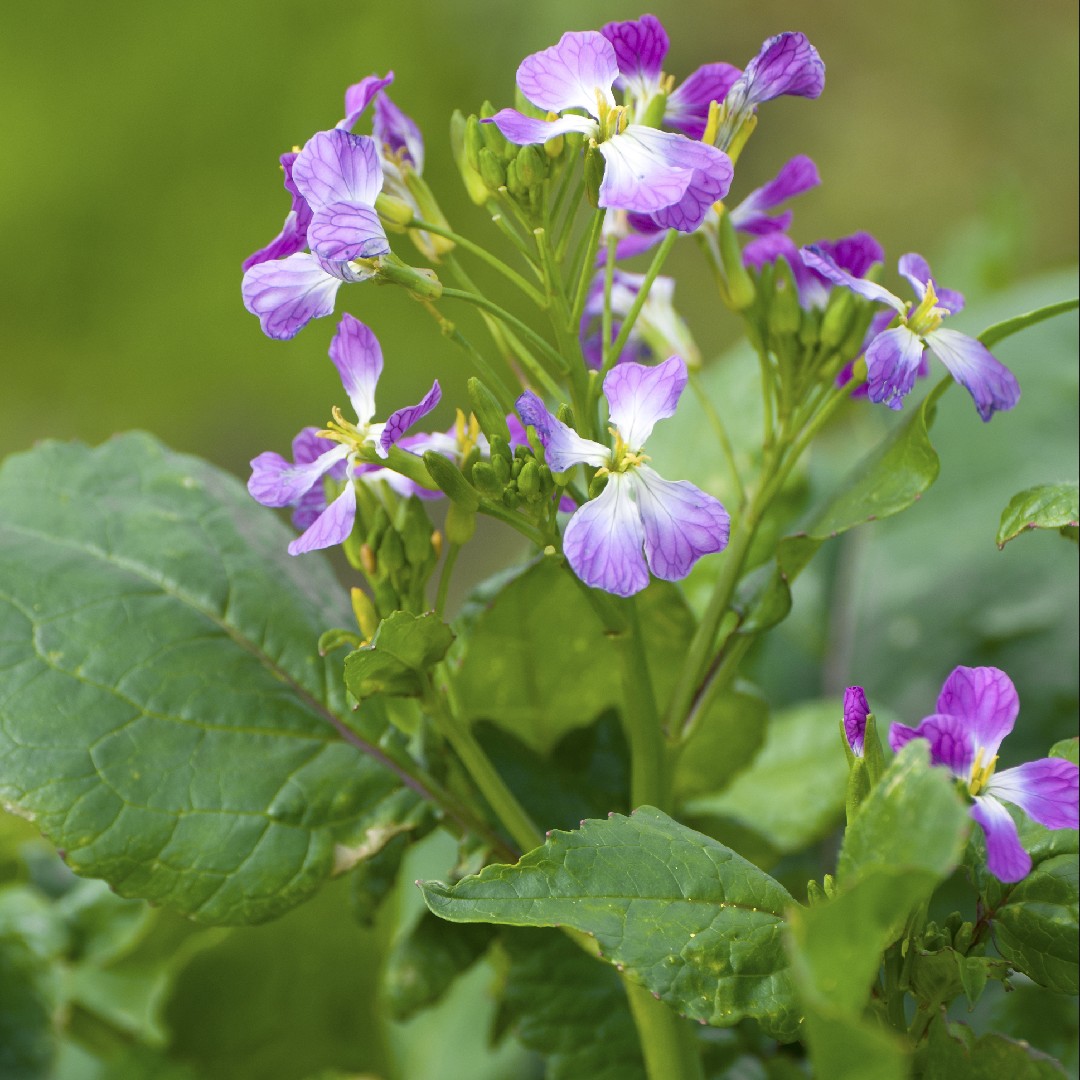













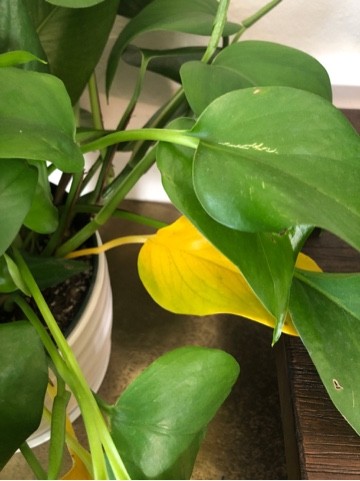
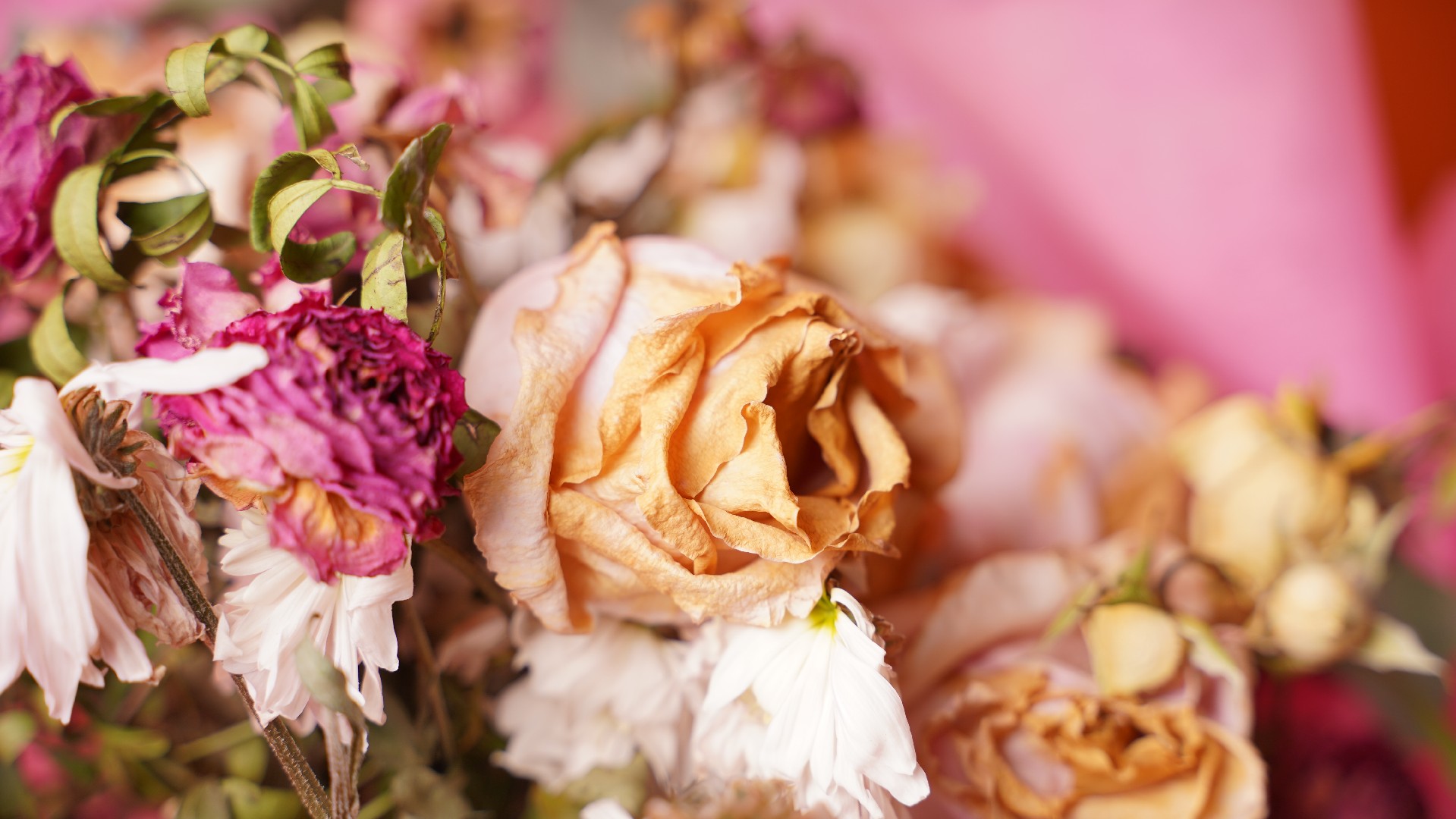
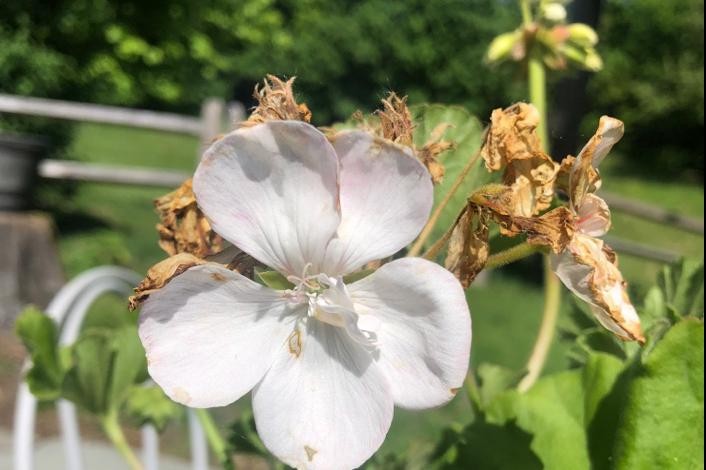
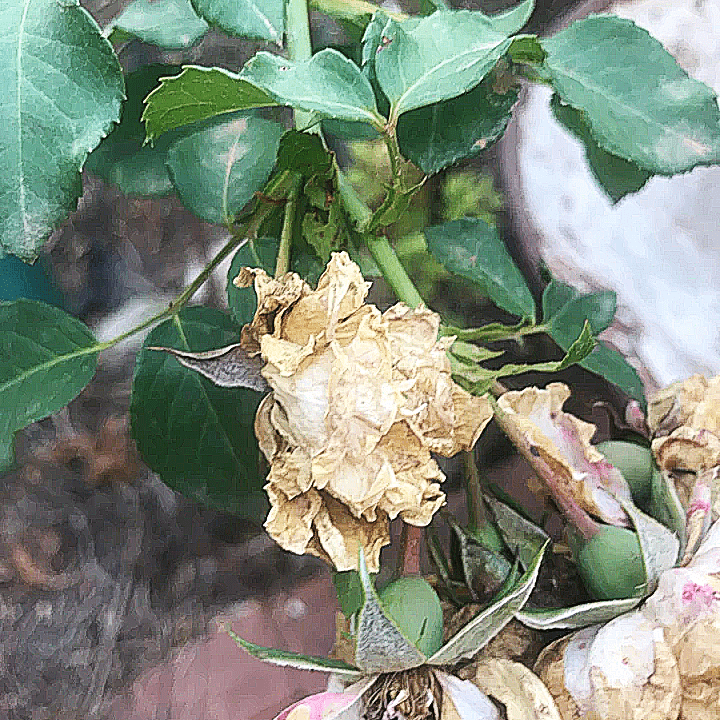









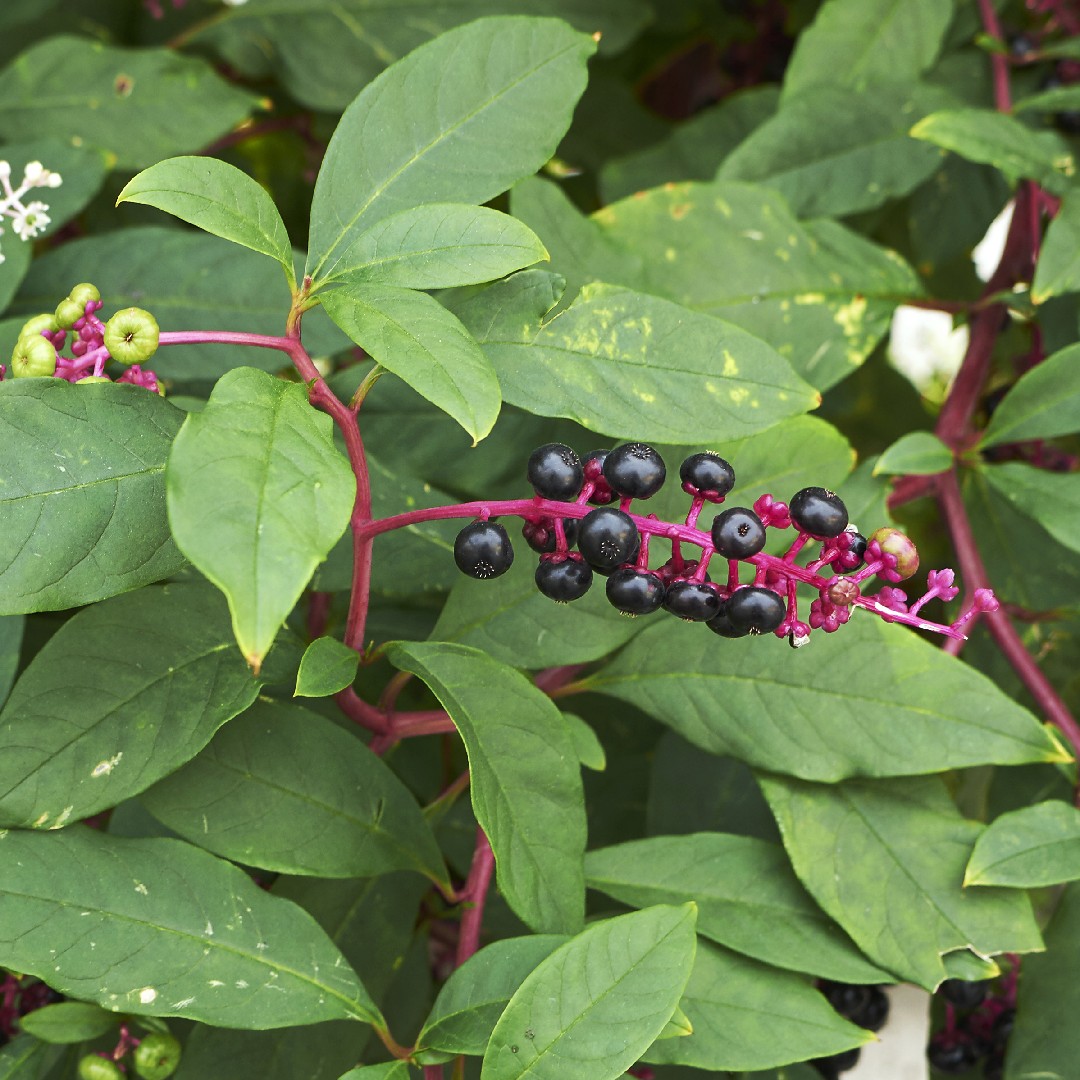








 Watch how sunlight gracefully moves through your garden, and choose spots that provide the perfect balance of light and shade for your plants, ensuring their happiness.
Watch how sunlight gracefully moves through your garden, and choose spots that provide the perfect balance of light and shade for your plants, ensuring their happiness. 








